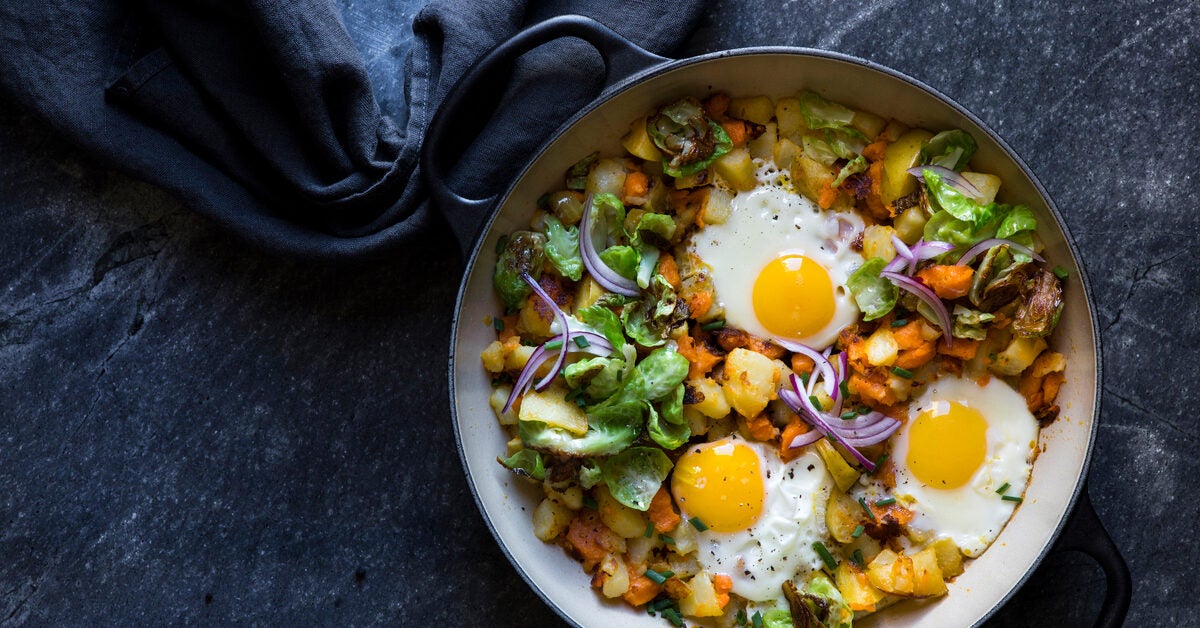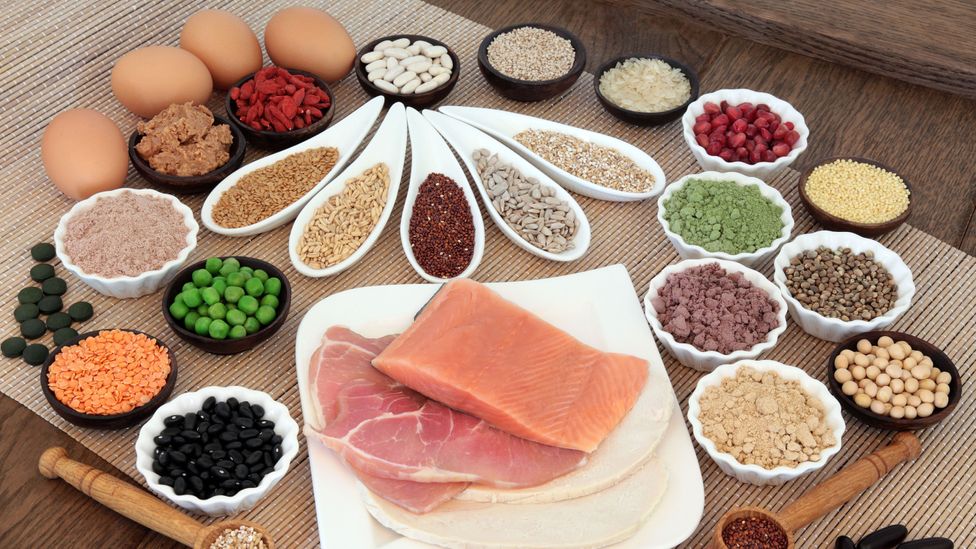Posts Tagged with “Health & Fitness”
The Best Foods for Lung Health

Add these foods to your diet to keep your lungs healthy and strong.
When it comes to lung health, you’ve probably heard the usual advice: avoid (or quit) smoking, stay away from highly polluted areas, and exercise regularly. However, you may not realize that eating the right foods is also an excellent way to support healthy lung function.
Like the rest of your body, your lungs benefit from a balanced diet full of essential nutrients, vitamins, and minerals. However, there are also some particularly effective foods that can help protect your lung health and reduce the risk or symptoms of lung diseases such as asthma and chronic obstructive pulmonary disease.
Below are the top seven foods for lung health, including key nutrients you should include in your diet if you want to boost lung function and prevent disease.
How does diet affect lung health?
One way diet affects lung health is through inflammation. Certain foods—like refined carbohydrates, soda, and red meat—cause inflammation in the body, which is linked to the development of many health conditions, including COPD and other lung diseases. By eating an anti-inflammatory diet rich in fruits, vegetables, fiber, and healthy fats, you can reduce inflammation and maintain healthy organs.
Take a quick quiz about what you’re looking for in a food delivery service and we’ll share our top picks. We may receive a commission when you make a purchase through our links.
Some specific foods have also been linked to healthier lungs in research. For example, fruits like apples and tomatoes contain high levels of antioxidants, which according to one study may help with lung function. Similarly, eating foods rich in fiber (such as lentils and beans) is also associated with better lung health.
In addition to eating nutritiously, there are several other ways to protect your lungs from disease and toxins, including:
Not smoking or vaping (or quitting if you currently use nicotine)
Avoid exposure to polluted air or secondhand smoke
Stay physically active
Adherence to health and hygiene recommendations, including hand washing and keeping up to date with dental care and vaccinations
7 Foods That Benefit Your Lungs
Generally speaking, eating a well-balanced and nutritious diet is an excellent way to take care of your lungs. Here are seven lung-healthy foods you can incorporate into your diet today.
apples
Apples – especially the skin of apples – contain an antioxidant called quercetin, which has been shown to reduce inflammation in the lungs and help people living with lung diseases such as COPD. In addition, eating apples and other fruits (including bananas and tomatoes) has been found to help prevent lung function decline, especially in people who used to smoke.
Peppers
Red peppers and chili peppers have high concentrations of vitamin C, another key antioxidant that promotes better lung health and reduces inflammation. Getting the recommended daily amount of vitamin C is important for everyone, but it’s especially important if you smoke because smokers have lower levels of vitamin C than non-smokers.
Beet
Beets, a brightly colored root vegetable, are packed with dietary nitrates. When consumed, your body converts these nitrates into nitric oxide, which helps relax blood vessels, increases oxygen flow, and lowers blood pressure—all of which help improve lung function. Beets also contain antioxidants and anti-inflammatory properties.
Leafy vegetables
Green leafy vegetables like Swiss chard, kale, and spinach contain a variety of antioxidants (including vitamin C and carotenoids) that help fight inflammation. Even better? Eating enough carotenoids – which are also present in tomatoes, peppers, and many fruits – is associated with a lower risk of lung cancer.
Legumes
Legumes such as beans, peas, and lentils are high in fiber, which in one study was found to improve lung function. Another study found that fiber consumption had a “protective effect” on the lungs of both smokers and non-smokers, helping to reduce the prevalence of COPD.
Tomatoes
Tomatoes and tomato-based products (including tomato juice) are fantastic sources of vitamin C and lycopene, another type of carotenoid antioxidant that reduces inflammation in the airways. Lycopene may also offer a reduced risk of death in people with COPD.
Berry
Deeply colored berries such as blueberries, strawberries, and blackberries are rich in anthocyanins, antioxidants from the flavonoid group. Anthocyanins have numerous benefits, including reducing mucus and inflammation in the lungs, as well as the potential to slow age-related decline in lung function.
Conclusion
Keeping your lungs in good shape is vital to your overall health. By eating a diet that’s rich in antioxidants, fiber, and other lung-strengthening nutrients mentioned above, you’ll have a better chance of preventing lung disease and illness—at least from a nutritional standpoint.
In addition to eating right, you can keep your lungs as healthy as possible by exercising your body regularly. If you have a chronic illness, tracking your key health indicators (in addition to seeing your doctor) is a great way to stay on top of your lung health and overall well-being.
Could Eating More Protein Reduce Obesity Risk? New Study Suggests It Can

Could Eating More Protein Reduce Obesity Risk? New Study Suggests It Can
Could eating more protein reduce the risk of obesity? A new study suggests it can
If you find yourself eating less-than-ideal snacks or packing in calories later in the day, you may just not be craving more food. According to a new study, your body may actually need protein.
The study, which was published in the journal Obesity, included an analysis of data from the National Nutrition and Physical Activity Survey, which ran from May 2011 to June 2012. Taking into account the dietary and physical habits of 9,341 adults with an average age of 46.3 years, researchers from the University of Sydney found that participants’ dietary energy intake generally consisted of 30.9% fat, 43.5% carbohydrate, 18.4% protein, 4.3% alcohol and 2.2% fiber.

Those behind the study also found that participants who didn’t eat as much protein during breakfast (or their first meal of the day) ate more during the rest of the day than participants who ate more protein earlier. High-protein breakfast eaters also ended up eating less as the day went on.
The researchers also found that participants who didn’t eat enough protein at the start of the day not only ended up eating more calories throughout the day, but also ate more foods high in fat, sugar, and salt; consumed more alcohol; and ate less healthy foods such as grains, vegetables, legumes, fruits, dairy products, and meat.
The researchers found that one of the reasons why the study participants did not consume enough protein was likely to be a high intake of processed foods. This high intake of low-quality processed foods crowds out protein foods that promote satiety, limit overconsumption of calorie-poor, nutrient-poor foods, and reduce the risk of obesity.
“It’s becoming increasingly clear that our bodies eat to satisfy a protein target,” Professor David Raubenheimer, head of the Leonard Ullmann Chair in Nutritional Ecology in the School of Life and Environmental Sciences and one of the study’s authors, said in a statement to EurekAlert! “But the problem is that the food in the Western diet has less and less protein. So you have to eat more of it to reach your protein goal, which effectively increases your daily energy intake.”
Lead author Dr. Amanda Grech, a postdoctoral fellow at the University of Sydney’s Charles Perkins Center and the University’s School of Life and Environmental Sciences, also noted: “As people eat more junk food or highly processed and refined foods, they dilute their protein diets and increase their risk of overweight and obesity, which, as we know, increases the risk of chronic disease.”
When you eat this, not that! I spoke with Kylene Bogden, RD, co-founder of FWDfuel, Pureboost ambassador, and Cleveland Cavalier’s nutritionist, she told us she wasn’t surprised by the results.

“These findings are incredibly accurate,” says Bogden. “Many of us consume processed foods multiple times a day, day in and day out, which leads to chronic inflammation and nutrient deficiencies. When our bodies are chronically inflamed and deficient, we can experience fatigue, intense sugar cravings, and lethargy.” lose weight.”
As for how high-protein, high-fat, and high-carb foods affect your body differently, as well as why the latter two can potentially lead to obesity, Bogden notes that “just breaking down protein burns the most calories, fat is in second place. and carbohydrates come in third.” He says that “part of this slower digestion process is that adequate protein intake is essential for optimal blood sugar control, and stable blood sugar makes weight loss a smoother process.”

Don’t fall prey to the victim mentality
Don’t fall prey to the victim mentality

Attitude is everything. A mental attitude, no matter what the end goal is, will either help you get there or hinder your progress, and one of the most damaging attitudes anyone can adopt is a victim mentality.
What is a victim mentality?
A victim mentality is a negative way of thinking. He blames other people and circumstances for any inner unhappiness.” It’s the proverbial finger-pointing scenario.
Those involved in the victim mentality view life through a narrow pessimistic lens and believe that whatever happens in life is the result of external causes. Internal reflection is never accounted for. To be a victim is to absolve yourself of guilt. Nothing is their fault – never! Those who engage in the victim mentality most often enjoy the attention, sympathy, and recognition they get from playing this “poor me” role.
When we are trapped in the hood of victimhood, we focus on how vulnerable we are rather than how powerful we are.
While no one is born with a victim mentality, no one is exempt from playing the victim role. Sweet elderly grandparents, loving mothers and well-intentioned fathers, teenagers, and even those who are considered “spiritually awakened” all live in this defeated realm.
In fact, every living person has played the role of victim more than once in their life.
Victims want to be mentally prepared for the worst, and unfortunately, for those who dwell in the victimhood, this self-sabotaging behaviour becomes more powerful when things seem to be getting worse because they are certain that “disaster is around the next corner.”
So how does one break free from this self-defeating, “poor me,” pessimistic programming, most of which was developed and adopted as a child?
It all starts at home with your perceptions/how you look at yourself. Do you see yourself as a survivor or a victim?
Survivors embrace life and flow with it. They live in the present and take control of their lives. They are fully aware that they alone are responsible for what happens. They know that when they take responsibility for their lives, they are empowered to change their lives.
On the other hand, victims wallow in self-pity, argue, and reject life. They dwell in the past and believe they are powerless to change circumstances – their key to avoiding responsibility. They live defensively and remain frozen in time without making progress because their perceptions tell them they are powerless.
The cost of a victim mentality is high. It negatively affects every area of life – professional and personal. Those who see themselves as failures dwell in the role of victim because failure only comes to those who give up.
If we really want to move away from the victim mentality, we must first own it. We cannot change what we do not own. We have to change our attitude and know that “change starts with me”. We must embrace survival and take steps… no matter how small or insignificant they may seem now, towards some goal we are trying to achieve.
Most importantly, we must constantly reinforce ourselves with the statements “I can” and “I will” and stop the demeaning statements and beliefs of “I can’t” or “I won’t”.
And we must embrace gratitude—the greatest of attitudes. Every day we need to take time to think about all the things that make us happy, all the things that are going well in our lives. Keeping our mind/energy focused on positive situations helps counteract the victim mentality.
Ultimately, we must honour ourselves with the same amount of respect and love that we try to give to others. Only then do our minds and actions shift from victim hood to survival mode.
The truth is that we cannot control the actions of others or every circumstance that arises in our lives, but we can control how we react to them. We don’t have to be victims. It’s a choice. Whatever happens or comes our way, we must see it as a challenge and not an excuse.
Are you looking for a powerful partner to help you erase the negative victim tapes that play over and over in your head? Look no further than your local gym. Getting your blood flowing and your “feel good” hormones flowing through challenging exercise is one of the best ways to overcome negativity, beat the victim mentality, and put yourself on the fast track to feeling physically, mentally, and emotionally healthy.
“You alone, as much as anyone in the entire universe, deserve your love and affection.
– Gautama Buddha
The victim must realise that small changes in behaviour and attitudes can lead to big rewards.
Do you want to discover the secret to rejuvenating your body, regaining lost vitality and improving the quality of your life? https://ReclaimYourLongevity.com/ can do it!
For more tools and tips to help you on your journey to health and fitness, visit http://CarolynHansenFitness.com/
While you’re there, grab my free 101 Habits for Super Health review
Carolyn Hansen is a certified fitness expert and fitness center owner who, with nearly 30 years of experience in competitive fitness and bodybuilding, has helped thousands of people start their weight loss journey to become strong, fit and youthful at any age.
4 Ways to Determine the Acidity of Water
4 Ways to Determine the Acidity of Water
To begin with, it’s important to remember that reverse osmosis water is somewhat acidic, which isn’t a major deal. You must, however, be comfortable with this method. In this article, we’ll go over a couple of methods for testing the acidity of your filtered water. Let’s learn more.

pH Test Strips
Dip a pH strip in the water, and the change in colour will indicate whether the water is acidic or alkaline. We recommend that you get anything that will assist you attain a reading of 5.5 to 8.5. Getting an acid strip with two broad readings is not a smart idea because it will be difficult to distinguish between the hues.
Litmus Paper is a type of test paper.
A pH strip and Litmus paper have a lot in common in terms of functionality. The only difference is that the accuracy of a Litmus paper is lower. If the water is alkaline or acidic, these strips will tell you. Reverse osmosis water is a mild acid in general. It may not even be able to identify if the water is acidic depending on the Litmus paper type.
Testing Center in the Area

You can also contact your local water testing authority for assistance. You can send a sample of water to these labs for a thorough examination. These service providers will give you with significantly more accurate findings.
Cabbage (Red)
You can also do a test with red cabbage. Because red cabbage has a pigment that changes colour depending on the pH level of water, it may be used to easily test your tap water. Simply combine a slice of cabbage with some water. The fact that the water turns red indicates that the sample is acidic.

Is it true that RO filters make water more acidic?
If you filter away alkaline minerals, you’ll end up with slightly acidic water, which is quite natural. In fact, regardless of the type of filter, you will obtain the same outcomes. The water will not dissolve since it is slightly acidic.
FAQs
What causes RO water to be acidic?
Because the reverse osmosis equipment removes alkaline minerals from the water, the acidity level rises. However, you do not need to be concerned because the acidity level is really low. Lemon juice and tomato sauce, on the other hand, have a much greater acidity level.
Is RO water acidic or alkaline?
Water from a reverse osmosis system has a pH of 6.5.
Is it necessary to remineralizer RO water?
Remineralization is an option for compensating for the acidity of water. You don’t have to do it, though, if you don’t want to. Experts say that even without remineralization, reverse osmosis water is safe to drink on a regular basis.
Is it true that RO water lowers vitamin D levels?
The vitamin D levels in your body will not be increased or decreased if you consume reverse osmosis water on a daily basis. The problem is that this filtration process removes certain minerals, such as calcium. However, this reduction will have no effect on your body’s intake.
Is it possible for RO water to eliminate minerals from your body?
No. The reverse osmosis (RO) technology eliminates salts from your tap water. Drinking this type of water, on the other hand, will not deplete your body’s minerals.
So, to determine if your water is alkaline or acidic, try one of these four approaches.
LIFE FITNESS TIPS: HOW TO MAKE HEALTH AND FITNESS A WAY OF LIFE

LIFE FITNESS TIPS: HOW TO MAKE HEALTH AND FITNESS A WAY OF LIFE | Coupons Markets
Many of us have set resolutions to improve our health and fitness since the start of the new year. While it’s great to have certain health and fitness objectives in mind, many people go to extremes to achieve them. They try the latest trendy diet or workout craze, and they frequently exhaust their mental and physical vitality in the process.
This frequently leads to burnout, failure, or injury as a result of either leaving or obtaining these goals but being unable to maintain them. As a result, I recommend that you abandon your irrational ambitions and instead focus on changing your lifestyle.
You create behaviors that will improve many aspects of your life when you begin to regard health and fitness as a lifestyle rather than a part-time hobby or a 30-day challenge.
A healthy lifestyle can help you to be more creative while also teaching you discipline, adaptability, and balance.
This will not only make you look and feel better, but it will also allow you to present yourself as a better version of yourself to the people who actually matter in your life.
IT’S NOT JUST ABOUT APPEARANCES
There’s more to health and fitness than how you appear, what you eat, or how much weight you can lift at the gym. It’s all about:
the way you are feeling
your standard of living
the level of concentration you have at work
the capacity to move
your mental health situation
You are in a better mood and can physically do more when you are actually well. You can go for a walk with your dog, hike, or go paddle boarding. Being unable to do these things can have a significant influence on your life experiences and quality of life.
AN EXAMPLE SETTING
You not only do yourself a favors by choosing to live a healthy lifestyle, but you also set a great example for those around you. Healthy decisions you make have an impact on your friends, family, and children, who are often inspired to make changes in their own life.
As a result, there are better relationships, a lower chance of sickness, and a world that is generally healthier and happier. You can have a ripple effect on others around you simply by choosing healthier choices.
Be the one to initiate the change.
YOU LEARN EXACTLY HOW TO CHANGE YOUR BEHAVIOR.
“Diets” or “exercise challenges” only last so long for me. It’s ridiculous to expect to travel at 100 miles per hour all of the time. Each of us is a human being. Life happens, stress arises and subsides, and schedules can be disrupted.
We learn to accept these things and ADAPT when we choose to maintain a healthy lifestyle.
When you’re on vacation and away from your gym and kitchen, you learn to appreciate life because you’ve built the habits and skills to live a healthy lifestyle no matter where you are. You can indulge without going overboard if you consistently practice moderation and balance. If you don’t have access to a gym one week, you develop the habit of travelling with your resistance bands, building a bodyweight circuit, or getting a workout in utilizing adjacent benches and stairs. When your routine is disrupted, you learn to adapt rather than self-destruct.
CONSISTENCY
Sure, rigorous diets or participating in gym challenges can provide results. However, only a small minority of people stick to their plans to the letter. These challenges are frequently accomplished in a short amount of time and come with rigorous success and failure criteria, none of which are good for your physical or emotional health.
When you establish lofty objectives for yourself, you’re more likely to feel defeated if you “fail.” When your expectations aren’t as high, you’re more likely to stick with it and enjoy the ride. You don’t put yourself under such a lot of pressure to be flawless. If you eat something “bad” or skip a workout, you simply get back on track the next day because it’s now part of your routine. This method is far more feasible and results in more long-term consistency.
Here are some suggestions for making health and fitness a way of life right now:
1. FIND AN EXERCISE THAT YOU LIKE.
When it comes to keeping regular with your workouts, this is critical. It’s only going to last so long if you’re always doing activities you don’t enjoy and that leave you physically and emotionally exhausted. Find workouts that make you feel good and that you can do for a long time, even if they aren’t the most strenuous. Low-intensity exercise that is consistently performed will always win out over high-intensity exercise that is inconsistently performed.
2. BE PATIENT IN ACHIEVING YOUR PHYSICAL OBJECTIVES.
Keep in mind that outcomes take time. Relax and take it easy on yourself.
Nothing worthwhile comes easily. Learn to enjoy the process as well as the person you become as you progress.
3. DON’T QUIT EATING THE FOODS YOU ENJOY.
I feel that you should never give up the foods you enjoy. Look for a method to make your favorite dishes a little bit healthier. Don’t give up pizza if it’s your favorite meal. You will feel deprived as a result of this. To make your healthy version, get creative and use simple items.
4. DO NOT COMPETE WITH OTHER PEOPLE.
This is your trip and your life. Because no two people are alike, you should avoid comparing yourself to others. You’re on the correct track as long as you wake up every day and strive to be better than the day before.
5. EXPERIENCE NEW THINGS
Take a risk and step outside of your comfort zone. With a companion, try a new exercise class and try new meals. Shopping for groceries depending on what’s in season is a simple approach to start experimenting with new cuisines and getting acquainted with a wide range of fruits and vegetables. Try meal prepping if you’ve never done it before! Getting out of your comfort zone and changing things up will keep things interesting and keep you motivated and encouraged to make this a permanent way of life.





